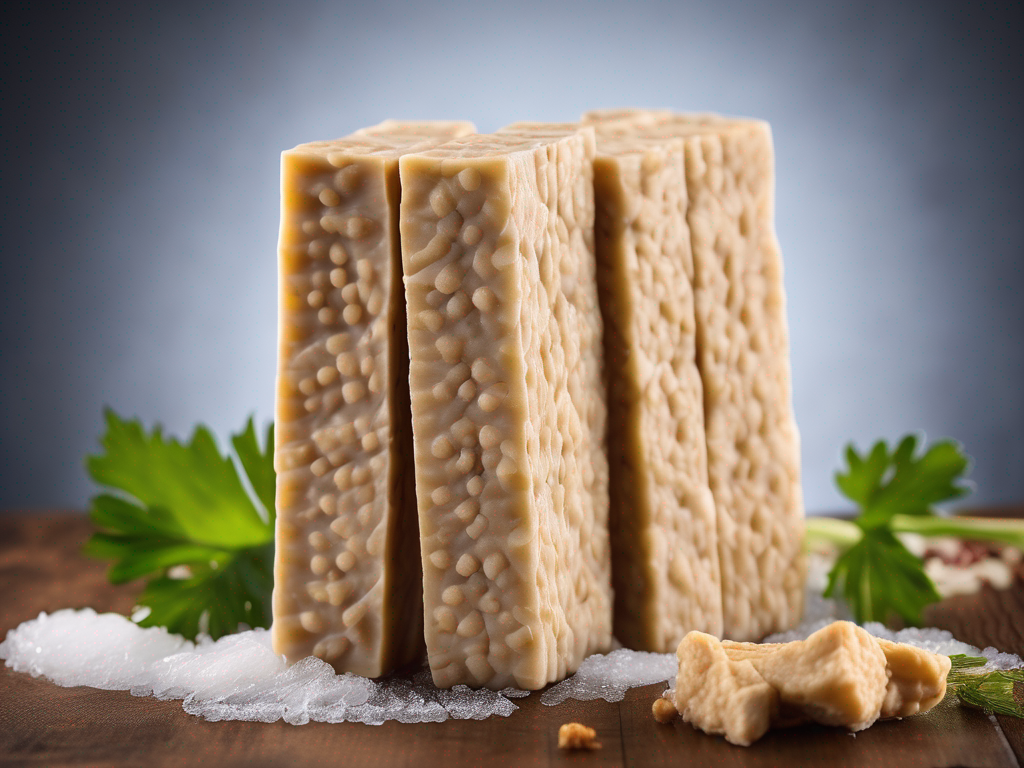
How to Tell if Frozen Tempeh Has Gone Bad Before Cooking
Get Your Free Food Safety Cheat Sheet
30 most common foods with instant answers. Print it and stick it on your fridge—completely free!
How to Tell if Frozen Tempeh Has Gone Bad Before Cooking
Frozen tempeh is a versatile and nutritious plant-based protein source that can be stored in the freezer for an extended period. However, like any perishable food item, tempeh can go bad if not stored properly or if it has been in the freezer for too long. It is essential to know how to identify signs of spoilage in frozen tempeh before cooking it to ensure food safety. In this blog post, we will discuss how you can tell if frozen tempeh has gone bad and provide practical tips for safe storage and consumption. (Frozen tempeh)
Understanding Frozen Tempeh
Tempeh is a traditional Indonesian soy product made from fermented soybeans. It has a nutty flavor, firm texture, and is packed with protein and nutrients. Frozen tempeh is simply fresh tempeh that has been stored in the freezer to prolong its shelf life. Freezing tempeh can help maintain its quality and prevent bacterial growth, but it is essential to handle and store it correctly to avoid spoilage.
Proper Storage of Frozen Tempeh
To ensure the quality and safety of frozen tempeh, follow these storage guidelines:
- Keep it Frozen: Store frozen tempeh in the freezer at 0°F (-18°C) or below to maintain its freshness.
- Use Airtight Packaging: Transfer tempeh to airtight containers or resealable bags before freezing to prevent freezer burn and exposure to air.
- Label and Date: Always label the packaging with the date of freezing to track its shelf life.
- Avoid Temperature Fluctuations: Minimize temperature fluctuations by placing frozen tempeh in the back of the freezer, away from the door.
Signs of Spoiled Frozen Tempeh
Before cooking frozen tempeh, inspect it for any signs of spoilage. Here are some indicators that frozen tempeh may have gone bad:
Visual Changes
- Ice Crystals: Excessive ice crystals on the surface of tempeh can indicate freezer burn, affecting its taste and texture.
- Discoloration: If frozen tempeh appears discolored or has dark spots, it may have deteriorated.
- Mold Growth: Any visible mold on the surface of tempeh is a clear sign of spoilage and should be discarded immediately.
Texture and Smell
- Texture Changes: Spoiled tempeh may feel excessively mushy, slimy, or have a rubbery texture instead of its usual firmness.
- Off Odor: If frozen tempeh emits a sour, rancid, or unpleasant smell, it is likely spoiled and should not be consumed.
Safety Precautions
When in doubt about the safety of frozen tempeh, it is best to err on the side of caution and discard it. Consuming spoiled tempeh can lead to foodborne illnesses and gastrointestinal issues. Here are some safety precautions to keep in mind:
- Do not taste spoiled tempeh: The appearance and smell of frozen tempeh are reliable indicators of spoilage. Do not taste it to check if it is still edible.
- Follow cooking guidelines: Cooking tempeh thoroughly can help kill any harmful bacteria that may be present.
- Practice good hygiene: Wash your hands, utensils, and surfaces before and after handling frozen tempeh to prevent cross-contamination.
Conclusion
In conclusion, frozen tempeh can be a nutritious and delicious addition to your meals when stored and handled correctly. By understanding the signs of spoilage in frozen tempeh and following proper storage guidelines, you can enjoy this plant-based protein safely. Always trust your senses when assessing the quality of frozen tempeh, and when in doubt, remember that it is better to be safe than sorry. By prioritizing food safety, you can savor the flavors of tempeh without compromising your well-being. (Frozen tempeh)
Authoritative Food Safety References
These agencies and university labs inform every tip and health precaution we publish.
USDA FoodKeeper – Cold Storage Guidelines
Official refrigerator, freezer, and pantry timelines maintained by the U.S. Department of Agriculture.
Visit USDA FoodKeeperFDA Produce Safety Rule & Grower Guidance
Field-to-fridge handling practices that prevent contamination of fruits, vegetables, and leafy greens.
Visit FDA Produce SafetyCDC Foodborne Illness Prevention Hub
Surveillance-backed guidance on pathogens, symptoms, and steps to reduce foodborne illness risk.
Visit CDC Food SafetyUC Davis Postharvest Technology Center
University research detailing optimal storage atmospheres for produce after harvest.
Visit UC Davis PostharvestPenn State Extension – Home Food Preservation & Safety
Peer-reviewed extension bulletins on safe canning, chilling, and reheating practices.
Visit Penn State ExtensionGet Your Free Food Safety Cheat Sheet
30 most common foods with instant answers. Print it and stick it on your fridge—completely free! Want more? Upgrade to the complete guide with 70+ foods.
Scan your food directly and get instant safety info using our AI-powered camera feature.